
|
|
Font Size:
|
||||
|
|
|
|
||||
STATISTICAL BRIEF #168:
Trends in Outpatient Prescription Drug Utilization and Expenditures, 1997 and 2004
Highlights
- From 1997 to 2004, total expenditures for outpatient prescription drugs increased over 160 percent from $72.3 billion to $191.0 billion.
- The average expenditure for persons with a prescription medicine purchase age 65 and older increased approximately 130 percent (from $819 to $1,914), and approximately 140 percent (from $347 to $838) for persons under age 65 when comparing 1997 to 2004.
- In the eight years from 1997 to 2004, the average out-of-pocket expense for prescription medicines for those with a purchase more than doubled for those age 65 and older (from $483 to $1,027) and for those under age 65 (from $143 to $304).
- When comparing 1997 and 2004, total number of prescription purchases increased from approximately 2 billion prescriptions (1.9 billion) to approximately 3 billion prescriptions (2.9 billion).
- For those persons with a prescription medicine purchase in 1997 and 2004, the average number of prescriptions for persons age 65 and older increased from 21.9 to 30.8 prescriptions, and the average number of prescriptions for persons under age 65 increased from 8.8 to 12.6 prescriptions.
- When comparing 1997 and 2004, the proportion of total health care expenditures accounted for by prescribed medicines increased from 13.1 percent to 19.8 percent.
Introduction
This Statistical Brief compares 1997 and 2004 estimates for the U.S. civilian noninstitutionalized (community) population from the Household Component of the Medical Expenditure Panel Survey (MEPS-HC) on total expenditures, total number of purchases, average total expenditure, average out-of-pocket payment and average number of purchases for outpatient-prescribed medicines for those with a prescribed drug purchase. This brief also provides the percentage of total health care expenditures represented by prescribed drug expenditures for 1997 and 2004.
Only prescribed medicines purchased in an outpatient setting are included in the estimates presented in this brief. Insulin and diabetic supplies and equipment are included in MEPS prescribed medicines estimates. Over-the-counter medicines are excluded from these estimates, as are prescription medicines administered in an inpatient setting or in a clinic or physician's office. Expenditures are in nominal dollars. All differences discussed in the text are statistically significant at the 0.05 level.
Findings
When comparing 1997 and 2004, MEPS estimates show an increase of over 160 percent in total outpatient prescription expenditures, rising from $72.3 billion in 1997 to $191.0 billion in 2004 (figure 1).
For the years 1997 and 2004, the proportion of total health care expenditures attributable to outpatient prescription medications has significantly increased. In 1997, prescription drugs accounted for approximately 13 percent of total health care expenditures (13.1 percent) and by 2004 accounted for nearly 20 percent (19.8 percent) (figure 2).
When comparing 1997 and 2004 estimates, for those with a drug purchase (168.5 million persons in 1997, and 184.1 million persons in 2004), the average annual expenditure for prescribed medicines more than doubled (increasing from $429 in 1997 to $1,037 in 2004). This was also true for those age 65 and older and those under age 65 (increasing from $819 to $1,914 for the age 65 and older population and from $347 to $838 for the population under age 65) (figure 3).
When comparing 1997 and 2004 estimates, the average out-of-pocket expenditure for outpatient prescription medicines more than doubled for those with a drug purchase (rising from $202 to $437). This trend held true for those age 65 and older (rising from $483 to $1,027) and for those under age 65 (rising from $143 to $304) (figure 4).
Between 1997 and 2004, total prescribed medicine purchases in an outpatient setting increased from 1.9 to 2.9 billion prescriptions (figure 5).
For those persons having at least one prescribed medicine purchase, the average annual number of drug purchases increased from just over 11 prescriptions per person in 1997 (11.1 prescriptions) to 16.0 prescriptions in 2004. During this same period, the average annual number of prescribed medicine purchases for persons age 65 and older increased from 21.9 to 30.8. For those under age 65, the average number of purchases increased from 8.8 to 12.6 (figure 6).
Data Source
The estimates in this Statistical Brief for 2004 were derived from the MEPS 2004 Full Year Consolidated Data File (HC-089). For 1997, the estimates were drawn from the 1997 Full Year Consolidated Data File (HC-020).
Definitions/Methodology
"Utilization" is defined as one or more purchases of a prescribed medicine. Expenditures are in nominal dollars.
About MEPS-HC
MEPS-HC is a nationally representative longitudinal survey that collects detailed information on health care utilization and expenditures, health insurance, and health status, as well as a wide variety of social, demographic, and economic characteristics for the civilian noninstitutionalized population. It is cosponsored by the Agency for Healthcare Research and Quality and the National Center for Health Statistics. For more information about MEPS, call the MEPS information coordinator at AHRQ (301-427-1656) or visit the MEPS Web site at http://www.meps.ahrq.gov/.
References
For a detailed description of the MEPS survey design, sample design, and methods used to minimize sources of nonsampling error, see the following publications:
Cohen, J. Design and Methods of the Medical Expenditure Panel Survey Household Component. MEPS Methodology Report No. 1. AHCPR Pub. No. 97-0026. Rockville, Md.: Agency for Health Care Policy and Research, 1997.
Cohen, S. Sample Design of the 1996 Medical Expenditure Panel Survey Household Component. MEPS Methodology Report No. 2. AHCPR Pub. No. 97-0027. Rockville, Md.: Agency for Health Care Policy and Research, 1997.
Cohen, S. Design Strategies and Innovations in the Medical Expenditure Panel Survey. Medical Care, July 2003: 41(7) Supplement: III-5-III-12.
Suggested Citation
Stagnitti, M. N. Trends in Outpatient Prescription Drug Utilization and Expenditures: 1997 and 2004. Statistical Brief #168. April 2007. Agency for Healthcare Research and Quality, Rockville, Md. http://www.meps.ahrq.gov/mepsweb/data_files/publications/st168/stat168.shtml
AHRQ welcomes questions and comments from readers of this publication who are interested in obtaining more information about access, cost, use, financing, and quality of health care in the United States. We also invite you to tell us how you are using this Statistical Brief and other MEPS data and tools and to share suggestions on how MEPS products might be enhanced to further meet your needs. Please e-mail us at mepspd@ahrq.gov or send a letter to the address below:
Steven B. Cohen, PhD, Director
Center for Financing, Access, and Cost Trends
Agency for Healthcare Research and Quality
540 Gaither Road
Rockville, MD 20850
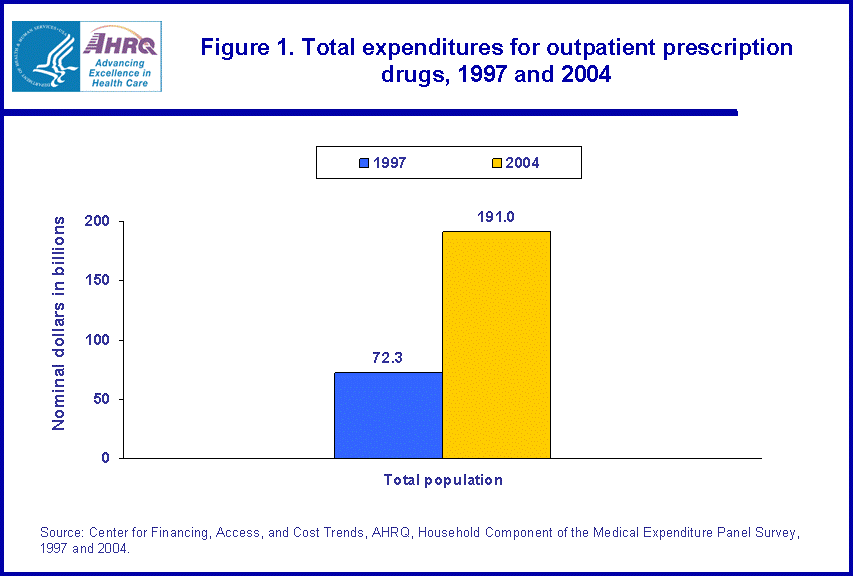 |
||||||||||||||||||||
|
||||||||||||||||||||
|
|
||||||||||||||||||||
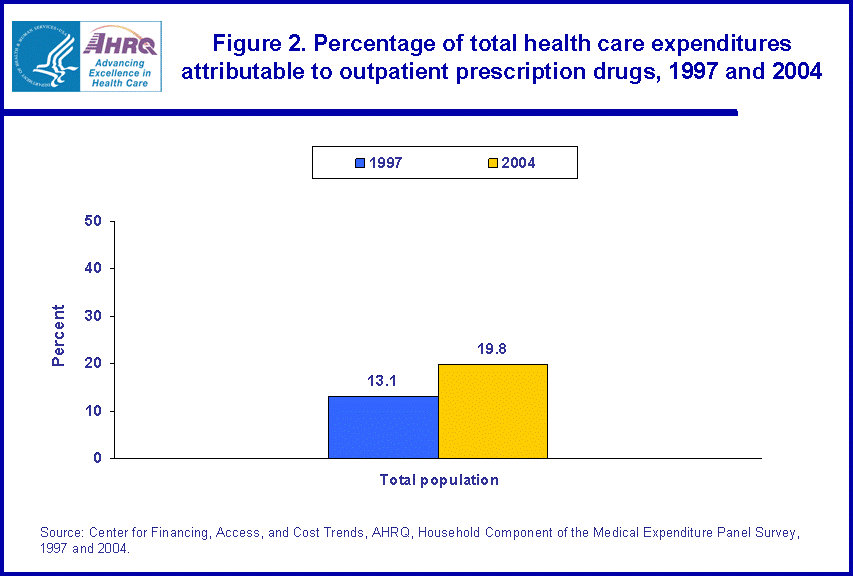 |
||||||||||||||||||||
|
||||||||||||||||||||
|
|
||||||||||||||||||||
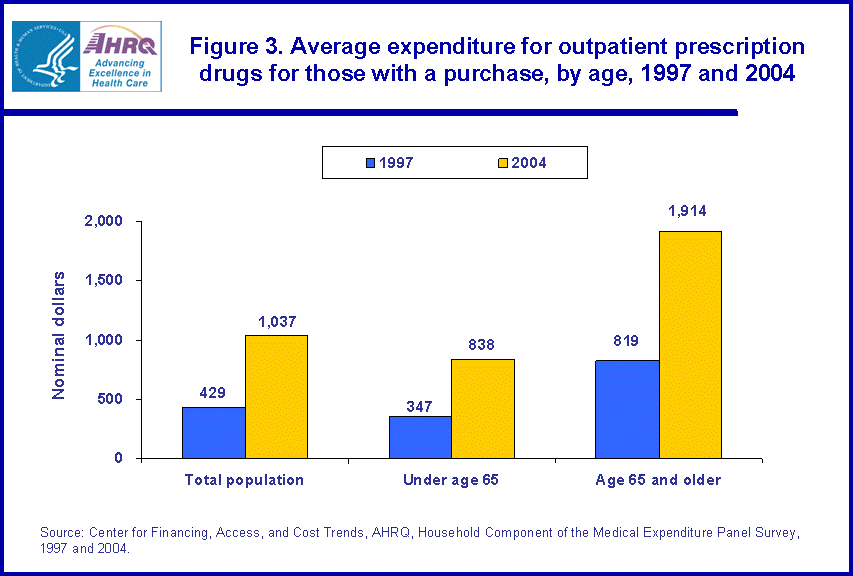 |
||||||||||||||||||||
|
||||||||||||||||||||
|
|
||||||||||||||||||||
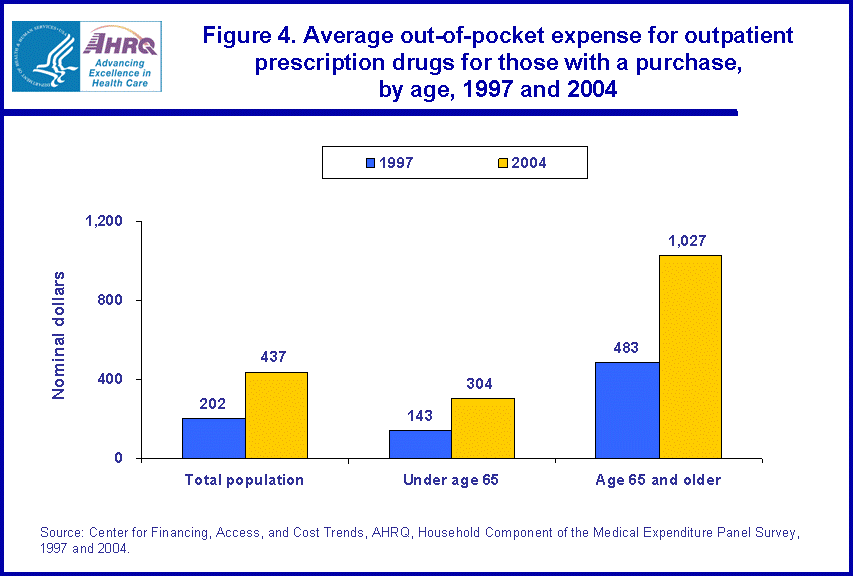 |
||||||||||||||||||||
|
||||||||||||||||||||
|
|
||||||||||||||||||||
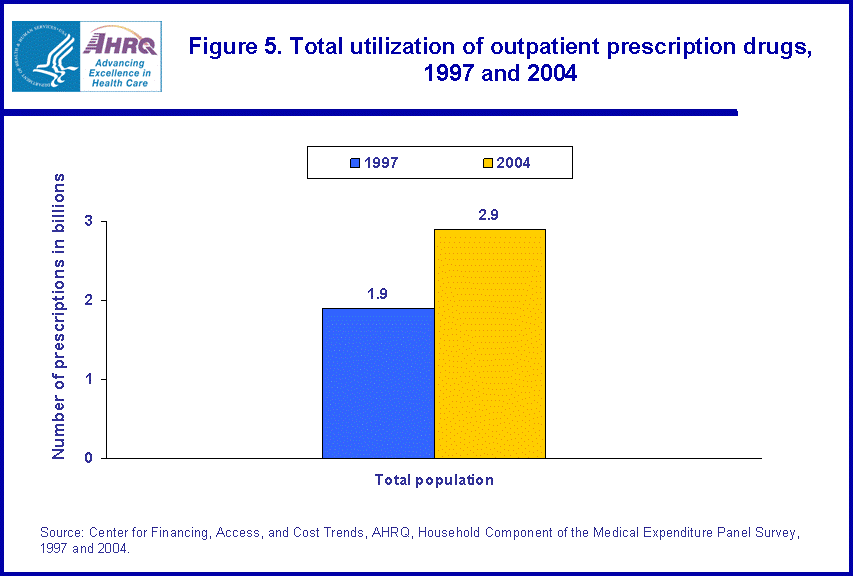 |
||||||||||||||||||||
|
||||||||||||||||||||
|
|
||||||||||||||||||||
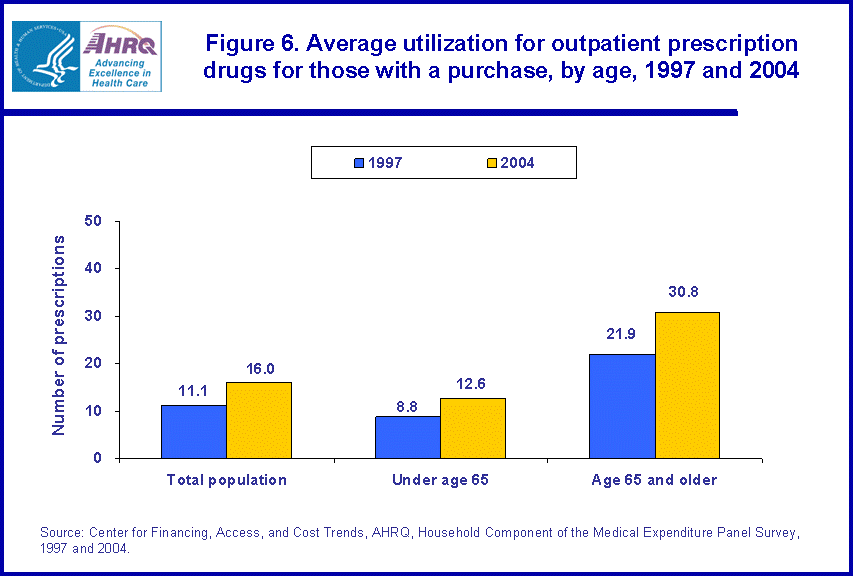 |
||||||||||||||||||||
|
||||||||||||||||||||
|
|
||||||||||||||||||||


